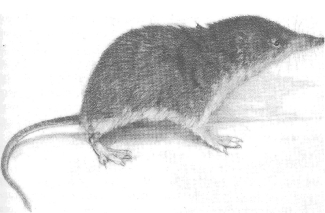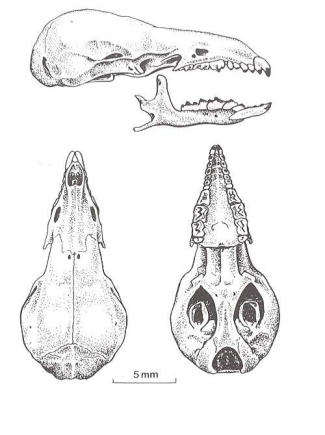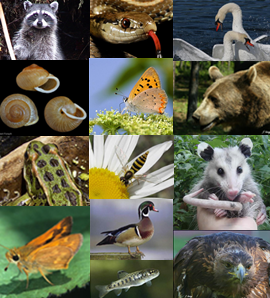View Desktop Page
Sorex monticolus Merriam
Dusky Shrew; Montane Shrew
Family: Soricidae
Dusky Shrew; Montane Shrew
Family: Soricidae
Species account author: David Nagorsen
Extracted from the Opossums, Shrews and Moles of British Columbia
Extracted from the Opossums, Shrews and Moles of British Columbia
Map click to expand contents

Distribution of Sorex monticolus in British Columbia.
(Click on the map to view a larger version.)
Source: Opossums, Shrews and Moles of British Columbia by David Nagorsen © Royal BC Museum
Illustration click to expand contents
Click on the image(s) below to view an expanded illustration for this taxon.


Illustration Source: : Opossums, Shrews and Moles of British Columbia by David Nagorsen © Royal BC Museum
Species Information click to expand contents
The Dusky Shrew is a medium-sized shrew with dorsal pelage that varies from greyish to dark brown in interior populations to nearly black in coastal populations; its ventral fur is brown to grey. The tail is bicoloured, but not distinctly. The second to fifth digits on the hind feet have more than four pairs of toe pads.
The skull is medium-sized. There are five upper unicuspid teeth, with the third smaller than the fourth. The medial edge of the first upper incisor appears straight in front view. The upper incisor has a large medial tine in the pigmented area on the upper incisor, but this trait is obscured in old animals with badly worn teeth. There appears to be geographic variation in both the intensity of pigmentation and the size of the medial tines of the upper incisor. Some coastal populations from central and northern British Columbia tend to have faint pigmentation of the face of the upper incisor, and the medial tines may be small.
IdentificationThe teeth of Trowbridge's Shrew (Sorex trowbridgii) and the Vagrant Shrew (Sorex vagrans) are similar to those of the Dusky Shrew: in both, the third unicuspid is smaller than the fourth. Trowbridge's Shrew can be distinguished from the Dusky Shrew by four traits: it has a distinctly bicoloured tail; the pigmented ridge on its upper unicuspid teeth is separated from the cingulum by a longitudinal groove; the medial tine on its first upper incisor is above the pigmented area on the tooth; and in front view the medial edge of the first upper incisors is curved. Discriminating the Dusky Shrew from the Vagrant Shrew is difficult, especially in coastal populations where pigmentation on the teeth is weak or in old animals with worn teeth. The Dusky Shrew averages larger in skull size and tail length, but the two species overlap substantially in most measurements. The Vagrant Shrew has no more than four pairs of toe pads on the second to fifth digits of the hind foot. The skull of the Vagrant Shrew can be distinguished by the medial tine on its first upper incisor, which is small and positioned above the pigmented region.
Dental Formulaincisors: 1/1
unicuspids: 5/1
premolars: 1/1
molars: 3/3
Measurementstotal length: 117 (93-140) n = 404
tail vertebrae: 51 (35-68) n = 436
hind foot: 14 (10-18) n = 436
ear: 7 (4-9) n = 198
weight: 6.6 (3.7-13.0) n = 417
Biology click to expand contents
|
Habitat click to expand contents
|
Distribution click to expand contents
|
Taxonomy click to expand contents
|
Remarks click to expand contents
|
Status Information click to expand contents
|
BC Ministry of Environment: BC Species and Ecosystems Explorer--the authoritative source for conservation information in British Columbia. |
